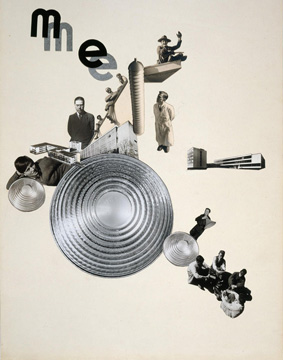Product Description
Christian Dell / Bauhaus “Tee-Ei” Tea infusers (Rare set of eight) 1924


CHRISTIAN DELL (1893-1974) Germany
BAUHAUS (1919-1933) Germany
“Tee-Ei” (tea ball) 1924 (rare set of 8)
Silvered brass.
***These are all in fine original, untouched condition.
Illustrated: Christian Dell: Silberschmied und Leuchtengestalter im 20. Jahrhundert, Beate Alice Hofmann, Museum Hanau (Hanau: Heller Druck,1996) illus. 15, p.56; Modernist Design 1880-1940, Alastair Duncan, The Norwest Collection (Woodbridge, Suffolk: The Antique Collectors’ Club, 1998), p. 173; Decorative Arts 1850-1950, Judy Rudoe, (London: British Museum Press, 1991) cover, p. 276; Die Metall Werkstatt am Bauhaus, (Berlin: Bauhaus-Archiv, Museum für Gestaltung, 1992) pp. 140-141 Silver of a New Era, (Rotterdam: Museum Boymans-van Beuningen, 1992) p. 157; cat. no. 140.
Length: 5 1/4″
Price: $9,600
Christian Dell, metal artist and industrial designer, played a formative role in shaping the Bauhaus style. Dell was the master of the metal workshop at the Bauhaus, 1922-25, in Weimar, working closely with László Moholy-Nagy.
Born the son of a locksmith in Offenbach in 1893, he had a great impact as a teacher on the curriculum of the Weimar metal workshop. He had done an apprenticeship as a silversmith in Hanau before and had also attended the drawing academy, followed by a stay at the Weimar School of Applied Art. Henry van de Velde, director of this institution, coined Christian Dell’s early works with his organic-flowing use of forms, a feature that can also be observed on Dell’s later works.
Metal workshop at the Bauhaus in Weimar:
From 1922, the former goldsmith, silversmith and coppersmith workshops of the Weimar phase became a laboratory for design where metal vessels and lamps were made. This is also where the designs for industry, as well as metal furniture, were ultimately created. In 1922, the silversmith Christian Dell took over as master of works. Following Itten’s departure in 1923, the workshop developed in a new direction with the Hungarian Constructivist László Moholy-Nagy. Instead of individual pieces, prototypes were now made for mass production. In order to manufacture the individual models, a production line was established.
Christian Dell / Bauhaus “Tee-Ei” Tea infusers (Rare set of eight) 1924
You must be logged in to post a comment.

Reviews
There are no reviews yet, would you like to submit yours?